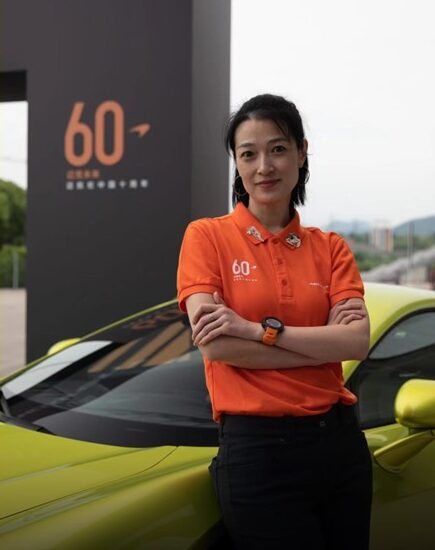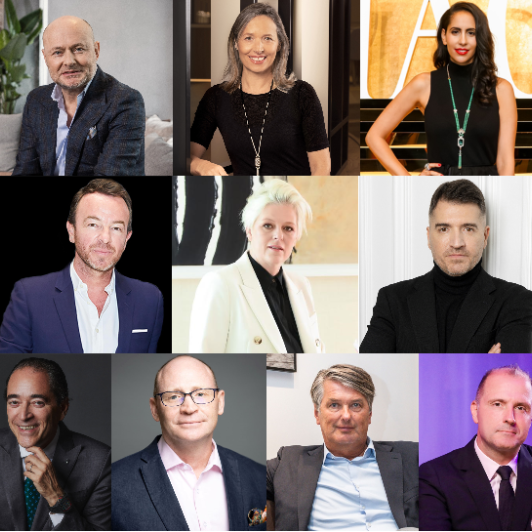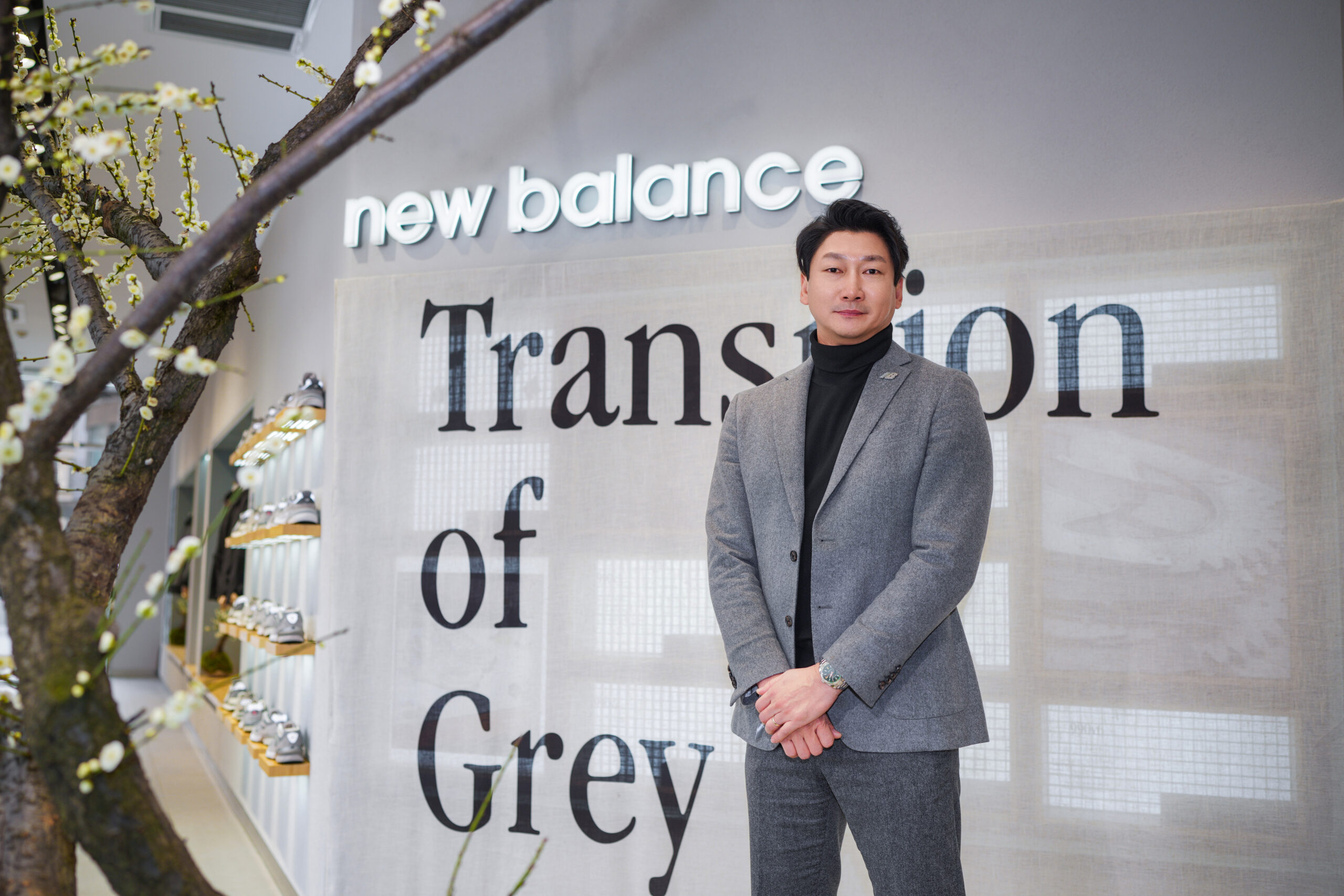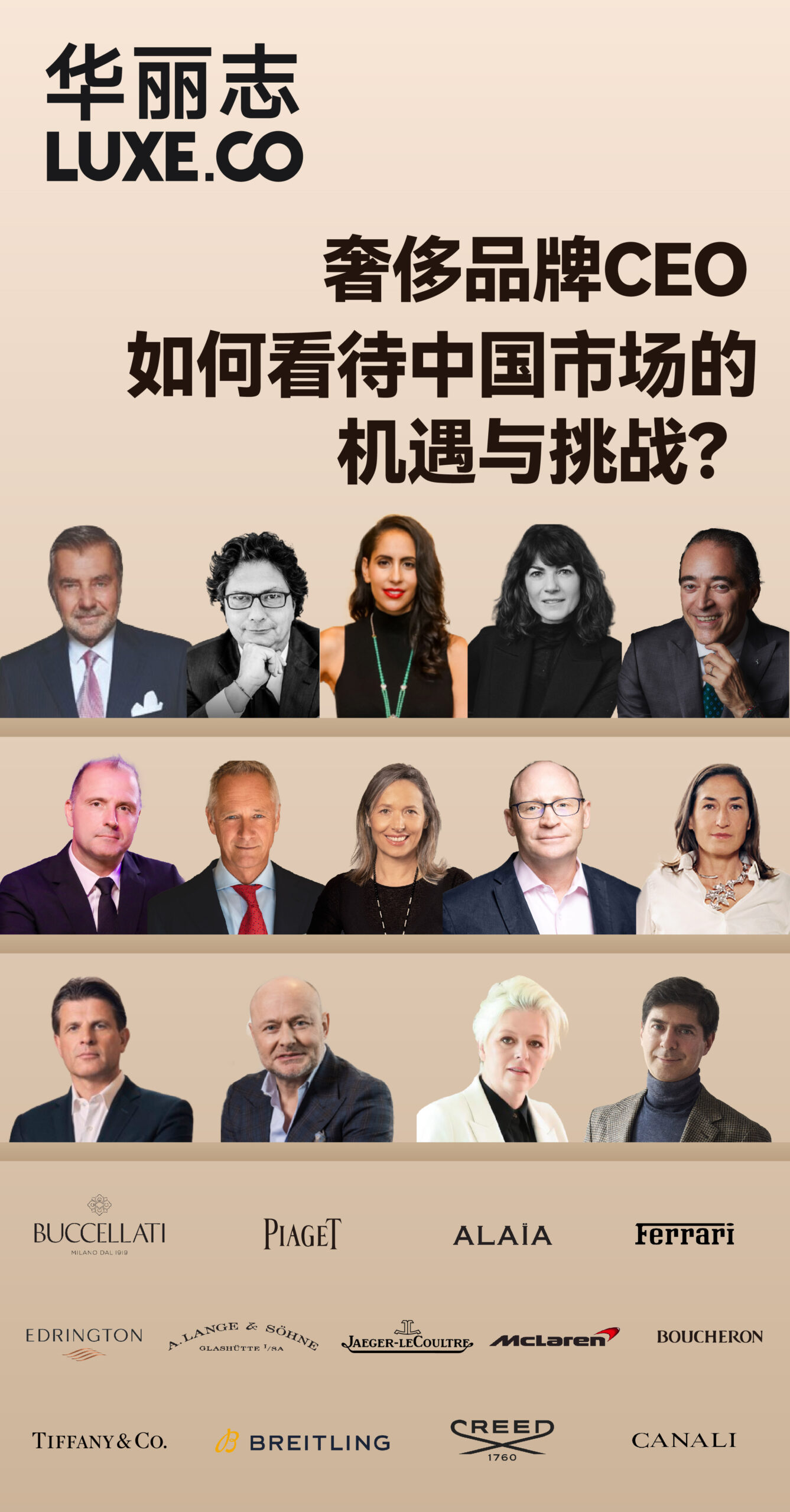%E6%96%B0-1.jpg?x-oss-process=image/resize,m_fill,w_1008,h_2048)
In China, enthusiasm for cars is growing like never before. As one of the most dynamic markets in the world, the automotive ecosystem here is iterating and evolving at an extremely fast pace.
How can luxury car brands capitalize on this trend to further enhance their performance in the market? How can they effectively address challenges, effectively communicate their brand story, and attract more high-net-worth customers to complete the cycle of awareness? This represents the most significant challenge for every brand.
For McLaren, China stands as one of its most crucial strategic markets. In terms of sales, China already ranks as McLaren’s second-largest market globally, with McLaren’s GT sports cars leading as the top-selling model worldwide.
Just last year, Paul Harris assumed the role of Managing Director for Asia Pacific and China at McLaren. With over thirty years of experience in the luxury automotive sector and more than twelve years specifically in the Asia Pacific and China markets, he brings valuable expertise to the position.
He recently appeared in China for the first time in his new capacity and was accompanied by the brand’s General Manager for China, Wang Na, for an interview with Luxe.CO, where we had an in-depth conversation on the following topics:
- Rising to the Challenge with a Product: Artura, the Carbon Fiber Architecture Hybrid Supercar
- The Most Impressive Automotive Retail Experience I’ve Had is in China
- You Have to Enter the Automotive Industry with a Long-Term Determination
Rising to the Challenge with a Product: Artura, the Carbon Fiber Architecture Hybrid Supercar
2023 holds a special significance for McLaren:
This year marks the 60th anniversary of the McLaren brand and the 10th anniversary of its entry into the Chinese market.
In April, McLaren took delivery of its latest Artura model, and in May, McLaren hosted an Artura track day at the Zhejiang International Circuit, proving that McLaren sports cars are equally suitable for road driving with their driving experience and product performance.


Above: McLaren Automotive 2023 Biennial Tour and the new Artura Track Day
The new Artura model is McLaren’s first production High-Performance Hybrid (HPH) supercar and the first to be built on the new McLaren Lightweight Carbon Architecture (MCLA), which is arguably the heritage of McLaren’s racing DNA, extreme performance and technological exploration.


Above: McLaren’s new Artura model
McLaren is dedicated to creating high-performance luxury supercars and has launched iconic models such as the McLaren GT, McLaren Artura, McLaren P1, and McLaren Senna over the past 10 years, and is now one of the largest independent companies in the UK.
Racing, however, has always been ingrained in McLaren’s DNA.
Bruce McLaren, the brand’s founder, had a passion for racing from an early age and became the youngest winner of Formula One in history at the age of 22.
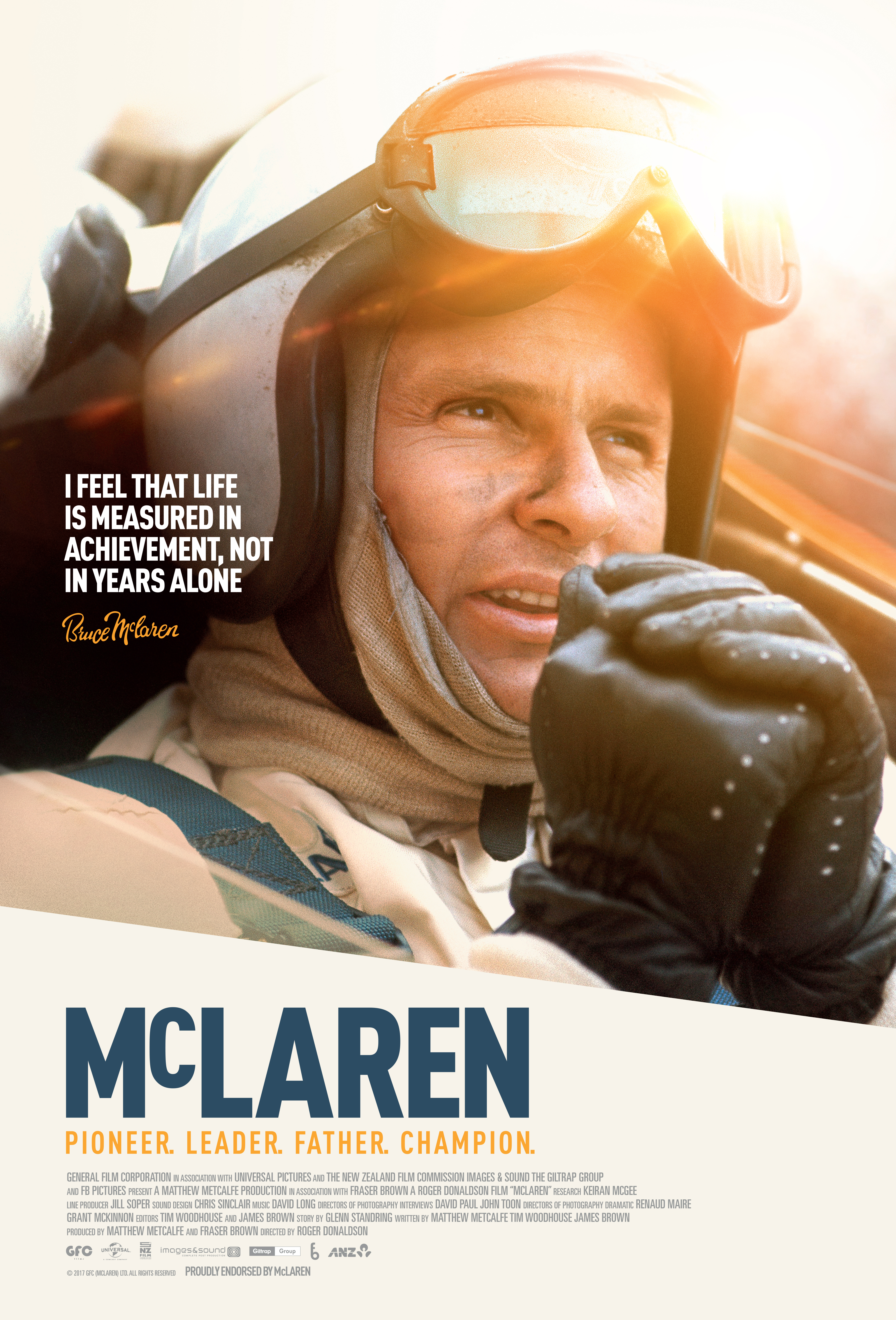
Above: McLaren founder Bruce McLaren
In 1963, he founded McLaren Racing, and the company went on to achieve remarkable success in the racing world, securing 20 trophies and establishing a formidable reputation.
However, following the founder’s death in 1970, McLaren Racing changed hands multiple times and faced a period of stagnation. It wasn’t until 1981 when McLaren introduced the McLaren MP4/1, the first-ever F1 car to feature a carbon fiber chassis, that the brand experienced a resurgence.
This particular model holds significant historical importance in F1 racing, showcasing McLaren’s unwavering commitment to innovation and technology. The official website defines the brand as a “high-tech company based in Woking, UK,” highlighting McLaren’s overarching brand philosophy: Everything is About Performance.
Luxe.CO: What is the difference between McLaren and other luxury products?
Paul Harris: Firstly, it is essential to define the concept of luxury. To me, luxury signifies personalization. The scarcity of a product is the most crucial aspect of luxury, followed by its pricing and positioning. Lastly, luxury also encompasses the overall experience, particularly the purchasing experience.
From our brand’s perspective, personalized service is a rarity. We are even willing to accommodate customization requests from customers, although it can be time-consuming and costly. McLaren remains scarce in China as well, as it takes us years to craft a car.
In terms of the customer experience, we invest a significant amount of time in demonstrating how our products work and perform. In the retail sector, we often invite customers to visit McLaren headquarters, setting us apart from other mass luxury brands in a significant way.
Building a car is no easy feat, and if any part of the process encounters an issue, we promptly address the customer’s problem. This level of commitment differentiates us from mass luxury brands. We communicate with our customers honestly and maintain an open-minded approach to running our business.
The Most Impressive Automotive Retail Experience I’ve Had is in China
In the first quarter of 2023, McLaren Group reported revenues of £135 million and sold 620 cars worldwide, with 67 of those, representing over 10 percent, sold in China.
McLaren places significant importance on providing an exceptional retail experience and fostering customer interaction. In an interview, Paul Harris mentioned that the brand frequently extends invitations to customers, inviting them to visit the brand’s headquarters to gain a deeper understanding of McLaren’s philosophy.
Located in Woking, England, McLaren’s headquarters encompass the McLaren Technology Centre (MTC) and the McLaren Production Centre (MPC). The building’s design is truly remarkable, with Paul Harris likening it to a “fictional spaceship.” It features winding suspension bridges, transparent cylindrical elevator shafts, and a fully glass-enclosed curtain wall, contributing to its futuristic appearance. Inside, the building houses design studios, laboratories, research and testing facilities, and machine shops that create an immersive high-tech environment, aligning with McLaren’s commitment to technology.
For those unable to travel to the headquarters, McLaren has established a special “work window” at the Shanghai Pudong showroom. This large screen displays real-time footage of the workflow within the McLaren production center, offering customers a unique and immersive experience that connects them directly to the heart of the brand.

Above: The “Work Window” at McLaren’s Shanghai Pudong showroom
McLaren owners demonstrate a strong sense of identity and belonging to the brand, often forming their own owners’ clubs and organizing offline activities.
For instance, in April of this year, over a hundred owners gathered in front of the Regent Hotel in Hong Kong, showcasing their diverse collection of McLaren supercars in a breathtaking spectacle. These gatherings bring together owners with different models and colors of McLaren cars, creating a vibrant and captivating scene. Additionally, the brand’s dealers frequently participate in organizing significant events. An example is the Hong Kong 2023 McLaren Parade held in February, which featured a display of over 100 McLaren cars, including 14 rare vintage models like the Speedtail and Senna GTR. This event celebrated McLaren’s 60th anniversary and highlighted the brand’s rich heritage.


Above: McLaren 60th Anniversary Hong Kong 2023 Mclaren Parade
In the Chinese market, McLaren has prioritized highlighting the distinctiveness of its products. The brand’s Personalization Center and the MSO (McLaren Special Operations) team at its headquarters have collaborated to introduce two consecutive models exclusively designed for the Chinese market: the GT Nebula Knight Collection and the GT Neon Spectrum Collection.
Continuing this tradition, McLaren is reportedly crafting a unique customization of the new Artura model this year. This special customization aims to further cater to the preferences and desires of Chinese customers, showcasing McLaren’s commitment to delivering personalized and tailored experiences to its discerning clientele.
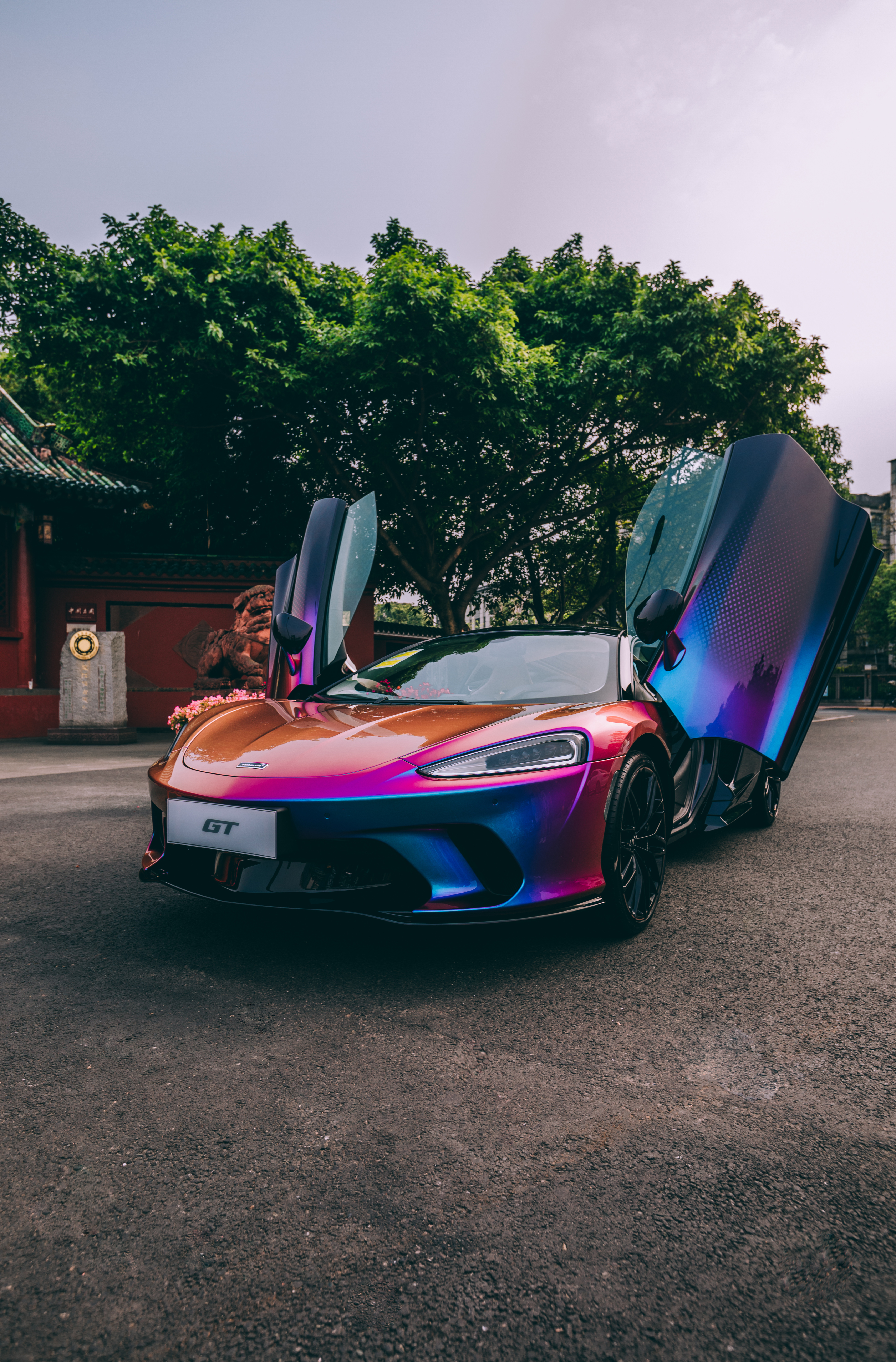
Above: McLaren’s customized GT Neon Spectrum models for the Chinese market
Luxe.CO: When you first entered the automotive industry, what was it like? How has it evolved compared to now?
Paul Harris: My father was also in the automotive industry, and with his influence, it was a natural progression for me to get into the industry. I remember first getting into the industry when I was 18 years old on an internship at BMW, and I saw a BMW F1 car at reception during the interview – that was a long time ago.
At that time, the UK car retail industry was still developing, but it was quite advanced. If you went to McLaren’s headquarters, you felt like you were entering a science fiction spaceship that operated in an unusual way because McLaren didn’t just make cars.
Then I came to China, which I think was in the midst of the development of the automotive industry. When you come to a new city, you see stores on street corners selling car tires and accessories. So, at that time, the barrier to entering the Chinese market was very low, but it was very difficult to become an expert in the Chinese market. I’ve seen the Chinese market develop over the years, and it has the most impressive large retail stores where there are two whole floors of customer centers where you can play games, enjoy a massage, and experience a tea ceremony, all combined in one building, and perhaps the most impressive retail experience I’ve ever had is in China.
Luxe.CO: How has your experience in luxury cars helped you in your work at McLaren and in the Chinese market?
Paul Harris: I’ve been in the automotive field for 37 years, and I’ve worked for different brands and been exposed to different cultures in different countries. I love the diversity of the work experience, but the Asia-Pacific market is perhaps more diverse than anywhere else in the world.
When I worked for another British luxury brand, I traveled to different sized cities in China, tier 1, 2, and 3, and spent a lot of time on brand building and distribution, which gave me a good understanding of the Chinese market. This is the first time I have been back in Beijing since 2013, and I can feel how fast China is growing.
What I bring to McLaren is more about user insights, the user portrait, the spending behavior of the super-rich, their expectations of the product, how the brand is differentiated, whether we make the brand feel special to the user, and so on and so forth.
McLaren doesn’t just sell products, so our communication with anyone we engage with needs to be professional, and memorable and leave people with a desire to learn more about the brand. I think if I can achieve that with my experience and connection with the user, we will be able to gain a loyal user base.
Luxe.CO: What characteristics have you observed about McLaren’s Chinese consumers?
Wang Na: From a customer perspective, Chinese customers are younger than those in other markets, but we don’t want to define them simply as young. I would rather say that they have a young mindset.
Our original customers were concentrated in their 30s, and as the market matures and GT models are sold, we now also have more owners in their 50s to 60s. They are starting to enjoy life and drive sports cars like Westerners do, so there is a certain degree of change in the age group of our customers.
Also, there are more and more female car owners in China, which is a very visible trend.

Above: McLaren GT models
You Have to Enter the Automotive Industry with a Long-Term Determination
At present, McLaren has established 14 dealerships in China, serving both first and second-tier cities.
Traditionally, McLaren has been perceived as relatively niche in the public eye. However, in recent times, McLaren has expanded its reach by venturing into various collaborations. For instance, in April, McLaren partnered with FILA to launch a golf co-branded apparel series. This collection includes polo shirts, jackets, ball caps, handbags, gloves, and other equipment. Notably, McLaren incorporated its signature carbon fiber technology into golf apparel, blending technology and sports to meet the discerning standards of the elite crowd in pursuit of superior quality. This move demonstrates McLaren’s efforts to enter new spheres and diversify its presence.

Above: McLaren and FILA golf co-branded apparel series
During a time when automotive discussions are at a heightened level of excitement, it is anticipated that McLaren, with its distinctive DNA and innovative automotive design concepts, particularly its unrivaled handling performance, will garner increased attention and recognition from a broader audience.
In the interview, the brand manager disclosed that McLaren would embark on a used car business starting this year, expanding its reach across the entire country. This strategic move indicates McLaren’s intention to tap into the pre-owned car market and cater to a wider range of customers, further establishing its presence and accessibility in the automotive industry.
Luxe.CO: Please summarize your view of the Chinese market in three words.
Paul Harris: Opportunity, Authenticity and Distribution Model.
In terms of opportunity, the Chinese market continues to grow, the affluent population is growing, and the opportunities in China are growing.
For McLaren, authenticity means keeping the racing DNA and the driving experience pure, and that’s the real challenge. From an emotional point of view, what do users feel when they drive a McLaren? What kind of impression do we want to leave on the user? There is definitely an opportunity to do better in terms of how we communicate and what people know about McLaren.
That brings me to the third keyword I said about our distribution model. We have always been distributor independent. Currently, all of our Chinese distributors are also selling cars independently. The focus of this model is to invest time and effort in training dealers in user experience, user communication, and brand understanding. If we can bring the DNA of the brand more frequently to the users we reach, this will be a successful model.
Luxe.CO: What are the biggest challenges the brand will face in the future to better integrate into the Chinese market?
Paul Harris: The most significant challenge lies in effectively communicating with consumers and conveying McLaren’s essence, origins, and historical background. It is crucial to tell and consistently reinforce the brand story.
Luxe.CO: What advice would you give to new brands of emerging cars?
Paul Harris: Brand building is a long-term thing. McLaren has been around for 60 years and has been in the Chinese market for 10 years, but we’re still at the beginning of the journey, to be honest. I think unless you go into the industry with that mindset, you’re going to be disappointed. You have to have plenty of motivation to keep innovating.
I’m not quite sure everyone who comes into the automotive industry is in that mindset, so that’s the only advice I have. At McLaren, we’re passionate, and we’re determined. We push ourselves forward in innovative ways and in innovative ways all the time. If we set the fastest pace today, we’re laying the foundation for tomorrow, and that’s our business ethos.

Above: McLaren Neon Spectrum Themed GT – Aurora Neon colorway

Above: McLaren Neon Spectrum Themed GT – Haze Neon colorway
About Paul Harris
Paul Harris is a UK-based business graduate from Coventry University with extensive and deep experience working in the automotive industry. During his time at BMW Group, he worked in several key markets in Europe and has over 12 years of experience in Asia Pacific and China with Rolls-Royce Motor Cars.
Harris joined McLaren Automotive on January 1, 2022. With more than 30 years of experience in the luxury automotive sector, Harris will lead McLaren Automotive into a new phase of development with the launch of the new Artura. He will further enhance McLaren’s brand presence, expand business growth opportunities and drive new and used car business in Asia Pacific and China.
About Na Wang
Na Wang joined McLaren Automotive in October 2019 as Regional Sales Manager and was promoted to Sales Director in July 2021. in February 2022, McLaren Automotive appointed Na Wang as General Manager of China to lead the brand’s business development in the region.
Wang has more than 10 years of experience in the automotive industry, particularly in the luxury supercar segment. She began her career in marketing and sales before moving into operational management and leadership roles.
In 2010, she joined Mercedes-Benz Cars’ largest global retailer group, Lexing, and in 2012, she joined Maserati China as Retail Marketing Manager. In 2016, she joined Aston Martin as Sales Operations Manager before being promoted to Senior Manager, where she was responsible for regional sales and marketing.
Photo Credit: Courtesy of the brand
Editor: Zhu Ruoyu

